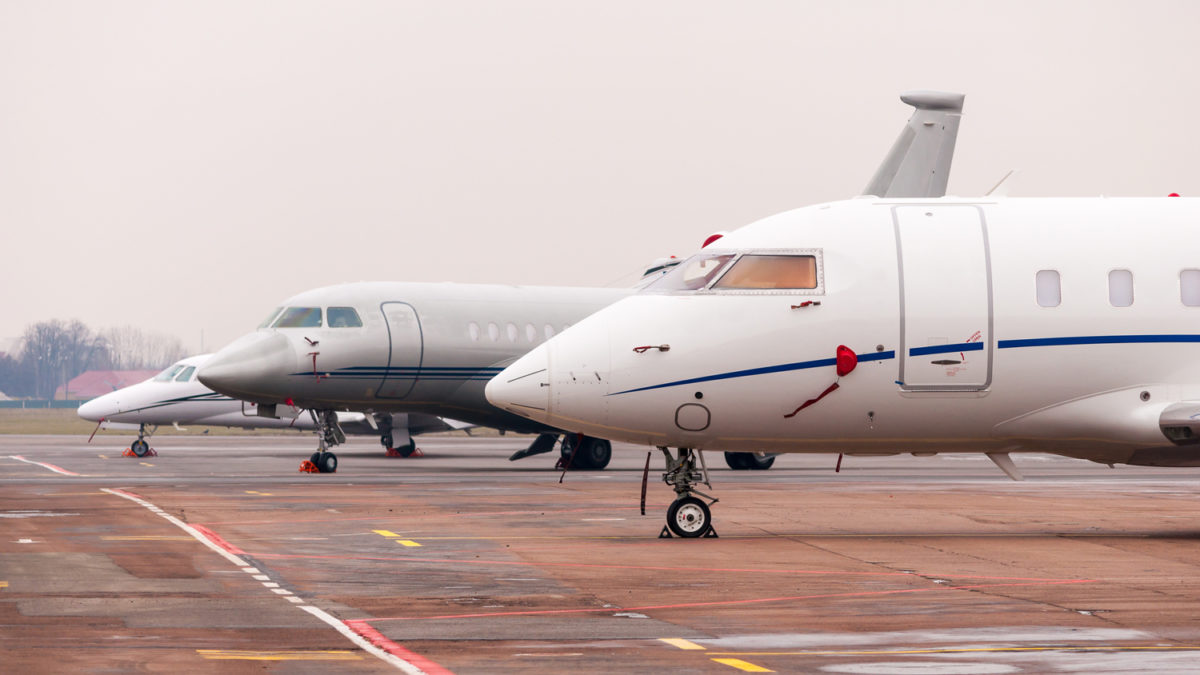
What is Your Home Trading For Today?
January 1, 2010The topic of private aviation is a common high-profile target of criticism during periods of economic strife. Within the aviation industry, the more commonly used term is general aviation, which is generally accepted to encompass all flights other than the military and regularly scheduled airline and cargo flights.
And while the most common reason for that criticism is obvious – an aircraft represents a significant expense, the reality is that so do many other assets that are utilized much less efficiently by individuals and companies. The general aviation industry is largely misunderstood and mischaracterized by many people who consider the majority of private air travel nothing more than a recreational luxury for wealthy individuals, which is statistically incorrect. Beyond the obvious clichés, a vast majority of the thousands of flights flown every day of the year in general aviation have much more substantial and in some cases critical purposes within the American economy for everything from individuals and small businesses to Fortune 500 corporations and our nation’s security.
General aviation allows individuals and companies to geographically reach a network of over 5,000 airports across the country using private aircraft that the commercial airline industry’s traditional “hub and spoke” system, which operates via approximately 600 airports, simply cannot service efficiently within the logistical needs required, or in many instances, at all. Further, general aviation provides users with nearly infinite logistical flexibility and options that are not available via commercial air travel.
Besides the significant volume of general aviation flights attributed daily to credible and routine business operations, private aircraft serve a multitude of other mission-critical services. For example, many aspects of the emergency medical field, including but not limited to organ donors/transplants and transporting critically ill patients and medical staff, rely almost exclusively on general aviation to facilitate life-saving efforts every day. Cargo, freight and mail services that we all take for granted in terms of reliance on expedited delivery utilize various derivatives of general aviation. The world’s largest airline – FedEx, although now considered a major “commercial” airline, actually originated under a business plan that relied on 14 Falcon 20 mid-size jets, a popular aircraft type still used today by general aviation owners and operators.
The evolution of private aircraft travel evolved in line with three other key developments – the general aviation industry’s growth (specifically, the number of available aircraft and operators), the continuing expansion of various industries poised to benefit from general aviation services, and the increased pool of potential users with sufficient revenues and/or transportation needs to justify utilizing general aviation. These three factors began to converge in the 1960’s and 1970’s and the market then accelerated rapidly in the following three decades.
Today, various industry statistics estimated that general aviation is a $150 billion industry annually and responsible for as many as 1.25 million jobs. When one compares those figures to the US auto industry, which including the Big Three manufacturer employees, parts-supplier employees and auto dealers, is estimated to include 1.6 million jobs, you begin to appreciate just how significant general aviation is to the US and global economy. Further, unlike the much-maligned domestic auto industry, US aircraft and related manufacturers continue to dominate the worldwide general aviation industry (70% or more of market share by some accounts). A majority of the leading aircraft manufacturers and their affiliated suppliers are also based in the United States.
Professional sports such as NASCAR are just one popular example of an industry whose growth and expansion has largely been facilitated by, or alternatively fueled the demand and need for, general aviation. NASCAR teams and drivers owning their own planes started much earlier than one might think. In doing some basic research on this subject, I found that the late Curtis Turner owned an Aero Commander that he also piloted back in the late 1960’s.
But it was particularly thru NASCAR’s era of rapid growth in the 1980’s and 1990’s that flying privately and owning an aircraft became prevalent and in some people’s opinion, de rigueur for drivers and teams. As the sport reached beyond the Southeast, that growth put increasingly higher demands on the teams and drivers, eventually so much so that commercial airline travel in many cases became a matter of functional obsolescence from the scheduling and operational perspectives. Note I specifically did not imply or claim it was impossible, but rather difficult.
Today, collegiate and professional sports including NASCAR operate on a very regimented schedule that might only be interrupted for two reasons – a major disaster (ex. – 9/11) or inclement weather. So if a team or athlete were to fly commercially and that flight be delayed or cancelled, preventing a team or driver from arriving at his/her destination in a timely manner, the show simply will go on without them. Of course, general aviation can encounter the same types of issues as commercial aviation (inclement weather affecting departure or arrival times, mechanical issues with the aircraft, or personnel issues, for example). But general aviation is much more well-adapted to providing greater flexibility to avoid such potential problems in the first place, or effectively work around them compared to the traditional, fixed terms of the commercial airline system. An oversimplified analogy might be the difference between you taking a bus or train on a scheduled route (ex. – Greyhound), versus using your own car or truck. As a result, few, if any, collegiate or professional organizations use commercial air travel today and instead operate their own aircraft under Part 91 or 125 Federal Aviation Regulations (FAR), or rely on an FAA-certified 3rd party charter operator.
I’ll share a personal example of how commercial airline travel can often complicate, at best, or fail to meet the needs of individuals or business. Following a NASCAR race at Atlanta Motor Speedway, a driver client and I were scheduled to drive our rental car to Atlanta International Airport and take a commercial flight to Las Vegas for a sponsor appearance the next day. The driver had just spent 3-1/2 hours in a racecar, so we couldn’t leave immediately until he had time to exit his racecar, handle his team and press/media obligations and return to his motor coach to shower and change. We unavoidably found ourselves right in the middle of the post-race traffic jam typical of any NASCAR event where 100,000+ persons are leaving simultaneously. Fortunately, we found an alternative back road known only to the teams to depart the track grounds. Even so, we spent a harrowing 1+ hours speeding unsafely to navigate greater Atlanta traffic, reach the airport and check in at the terminal. I would say in post-9/11 terms, the margin for missing that flight was less than 10 minutes and it was a stressful event for the both of us. Had we missed the flight, there was no other commercial flight option that evening and it would have been physically impossible for the driver to make his contractually-required appearance in Las Vegas – one of only 2 per year that were critical to that sponsor and their significant annual investment in his endorsement sponsorship.
After that episode of naivety, we agreed that while operating as cost-efficiently as possible was always a goal for us and our business partners, at the very least, the minimum compromise in a similar situation would be to make arrangements for a helicopter ride via a general aviation operator from the racetrack to the commercial airport.
The reality is that regardless of occupation or financial status, most of us at some point have or will encounter similar scenarios in our personal or professional obligations when the logistic and financial considerations of using general aviation versus commercial air travel best serve our needs.
The third key factor in the rise in use of general aviation that accompanied the growth and expansion nationally of NASCAR, continuing with the same example, was the corresponding increase in revenues. If a driver were making $1m or less per year, it would virtually impossible for them to cover the annual fixed and variable operating expenses associated with the ownership or routine use of a light aircraft capable of carrying 5-7 passengers (such as a King Air, Citation or Learjet – the most common types used). But as the sport grew and the demand for talented drivers increased exponentially, so did their salaries. Today, with top Cup drivers earning annual income on par with other major professional sports, their budget can accommodate at least the expense justification of flying privately via general aviation. And while logistically justifying use of general aviation for 100% of a NASCAR driver’s travel needs is not realistic, certainly a significant percentage of those travel needs cannot be effectively or efficiently met by commercial aviation.
Similarly, multi-car team revenues have jumped to unprecedented levels in the past 10 years and in many ways, the issues and considerations for teams even more strongly support their reliance on general aviation. For example, Hendrick Motorsports and Roush Racing field multiple teams in NASCAR and have to manage the transportation logistics for literally hundreds of persons every week. To the best of my knowledge, the sanctioning body has never met with teams and informed them that the sport’s schedule and demands would require them to use general aviation rather than commercial aviation to address their transportation needs. Yet, the sport has evolved to where that has indeed become a virtual necessity in many instances, rather than a luxury.
Imagine if the travel department for Hendrick Motorsports, rather than managing the movement of over 100 hundred people in multiple groups over the course of a race weekend via their own aviation department, was forced to book commercial flights for 34 race weekends, across the country and in some cases beyond the border, not including testing, sponsor and business-related activities and other miscellaneous travel related to the operation of the business. The logistical challenges would be daunting, to say the least.
For these types of clients, even flying privately via general aviation presents a variety of challenges. Even operators familiar with the NASCAR industry can often struggle to meet teams’ expectations and that is why many organizations choose to own and operate their own aircraft. Like any business, a customer’s satisfaction is very much dependent upon finding a reliable company that one trusts from a safety perspective, first and foremost, as well as considering their resources, operating record and level of service.
Perhaps the bellwether of the most recent public misunderstanding associated with the general aviation industry was associated with the appearance of the Detroit automakers’ CEO’s before Congress to plead for government financial assistance. The true fault that day was arguably not in those managers using their company’s private aircraft to travel to Washington, but rather their own embarrassing and completely ill-prepared rebuke to criticism of their company’s ownership and use of private aircraft for business, demonstrating that even CEO’s of major corporations may not fully understand and/or be able to effectively communicate the benefits of general aviation.
Because of such high-profile gaffs and the general climate of misunderstanding exacerbated by the worldwide economic recession, the National Business Aviation Association (NBAA), an organization founded in 1947 that promotes the aviation interests of organizations utilizing general aviation aircraft for business purposes in the United States and worldwide, has undertaken initiatives to more directly counter such negative publicity of the industry. However, the fact remains that private aviation has had a negative stigma for years that remains a material issue today. Meanwhile, many of this country’s most talented and successful entrepreneurs and corporations rely daily on general aviation to facilitate their ability to produce results that contribute to the growth, competitiveness and success of their business, industry and our overall economy.
Even companies who already rely on the benefits of general aviation face unique challenges related to their activities. There are well-recognized corporations today whose personnel and transportation logistics cannot be met by commercial aviation, thus requiring use of charter on private aircraft, and their annual usage would be more efficiently met from a financial perspective with full ownership of an aircraft, rather than simply being a charter customer. However, negative perception amongst certain parties including their employees and/or shareholders discourages them from doing so. So the irony is that the ill-informed critics are actually costing themselves and their company more money because of a general sentiment, rather than actual facts!
Thru the FAA’s guidance under FAR 135 guidelines for the on-demand charter industry, any individual or company can fly via general aviation. A sudden illness, impending death of a close family member, or birth of a child, for example, can be sufficient reason for someone to consider the speed and efficiency of a private charter. I have personally been associated with friends affected by at least 2 of those situations and in both cases, flying privately was the only way they could reach their family in that time of critical need. The actual process required to quote and book a private charter flight is surprisingly simple – generally no more complicated than booking a hotel reservation, and the timeframe can literally be as quick as an hour in some cases.
So the next time you read a story about an individual or company using general aviation or see a private aircraft taxiing amongst the commercial airliners at a major airport, consider what that flight might actually be accomplishing.
For additional information on the general aviation industry, please visit www.nbaa.org or contact Eric Giangiordano, Principal – Resolution Management & Marketing, for questions or inquiries regarding your general aviation needs.




